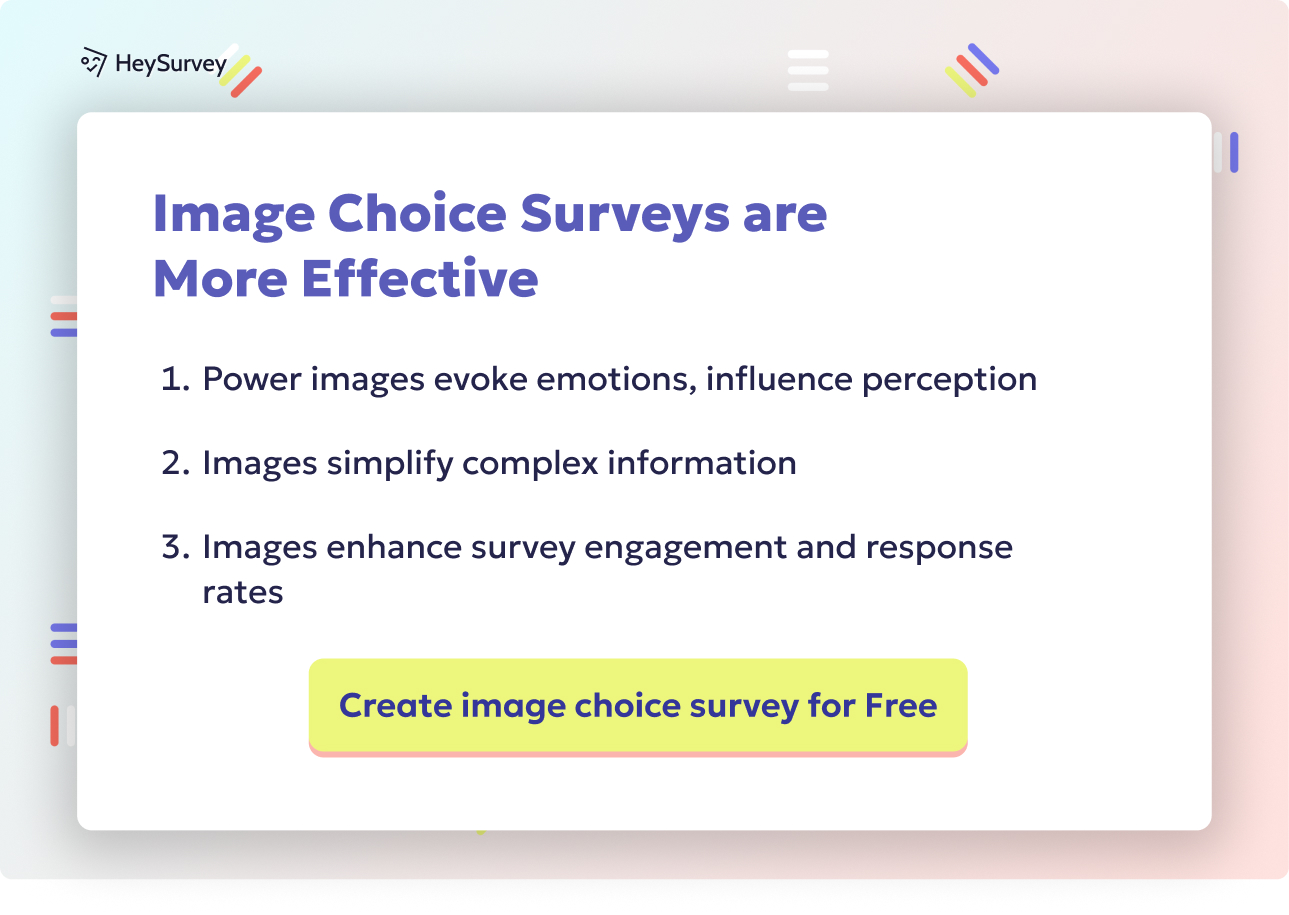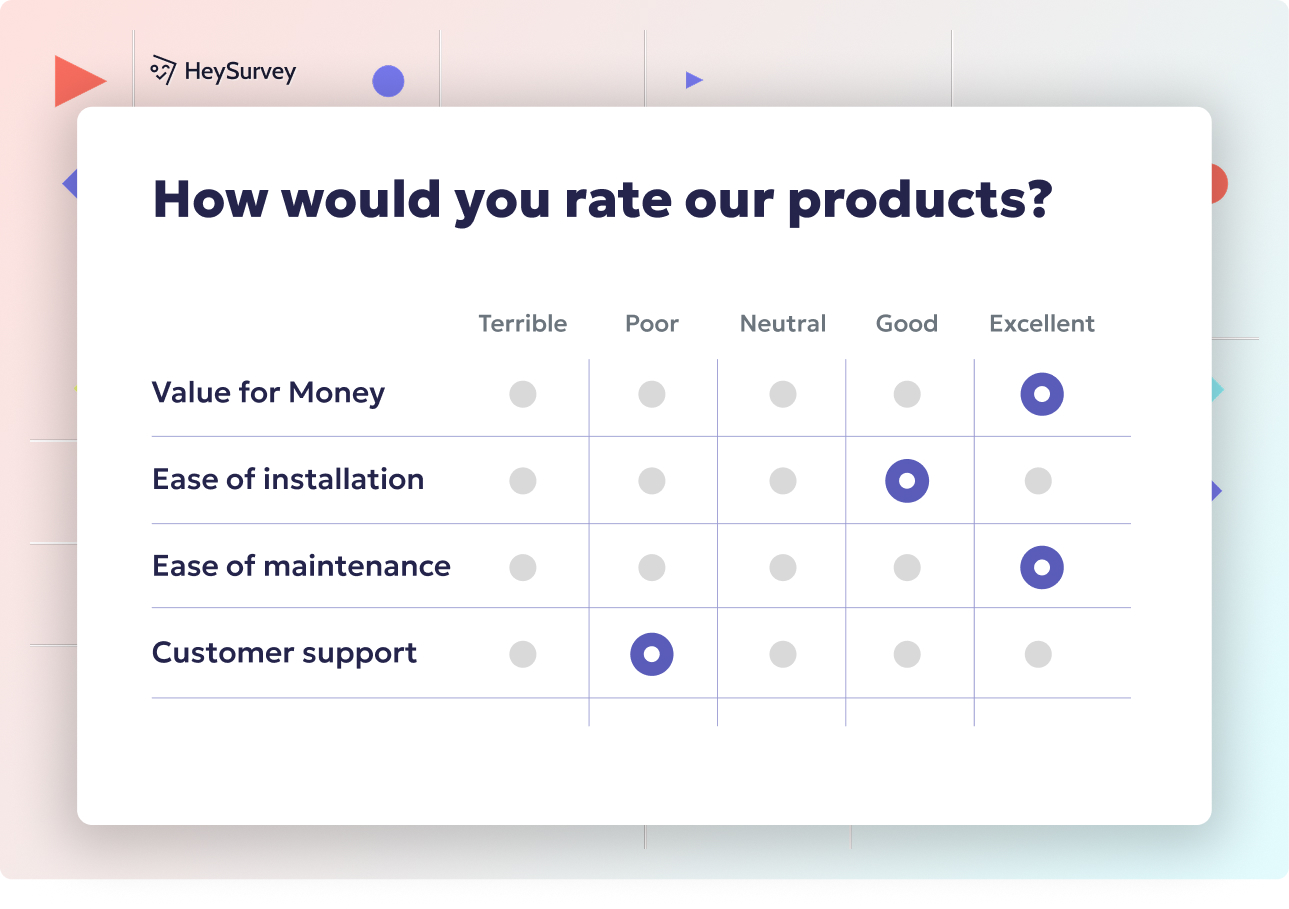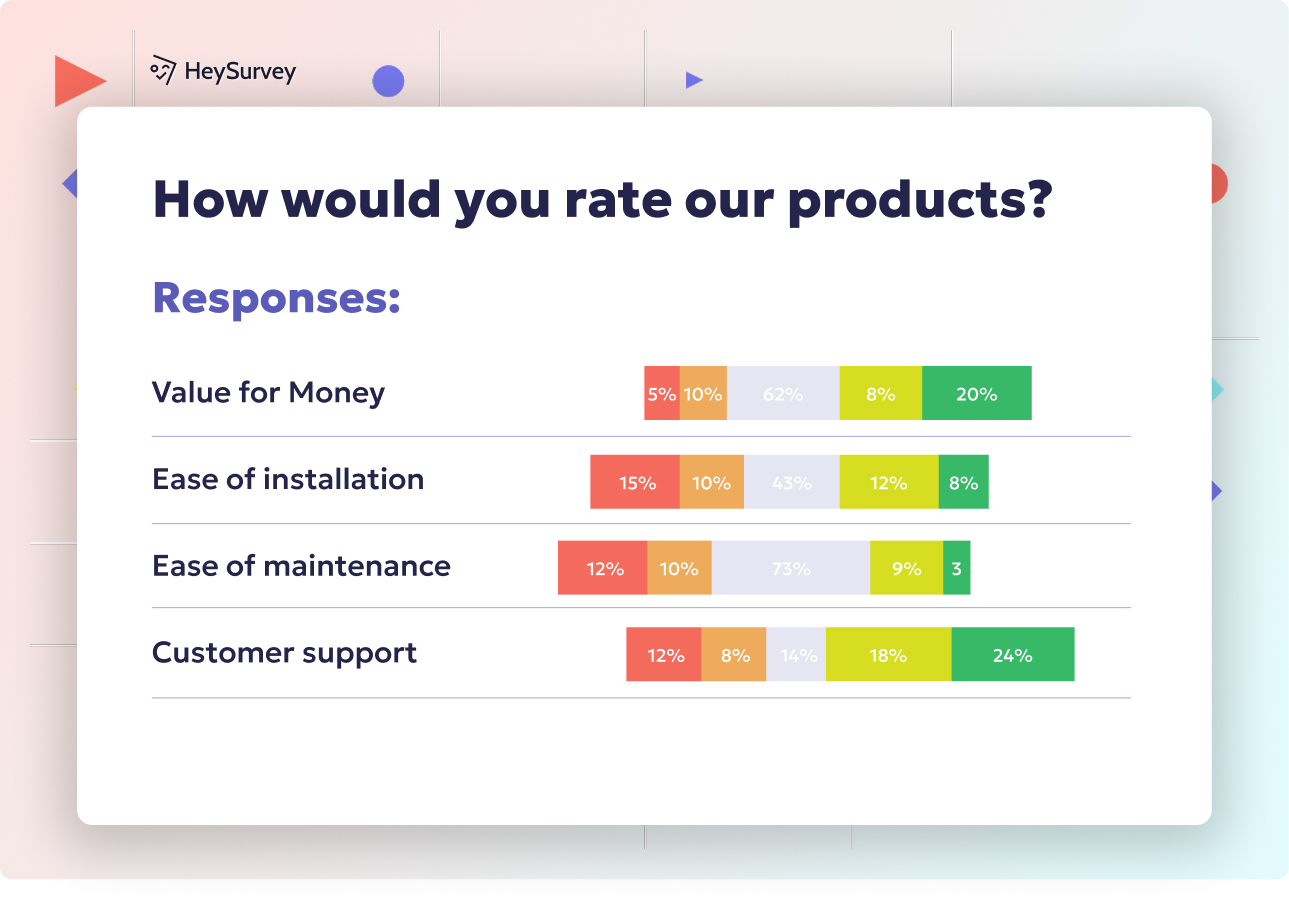30 Leadership Survey Questions to Assess and Improve Effectiveness
Explore 30 detailed leadership survey questions with insights on assessing leadership effectiveness and gathering impactful leadership feedback.
Leadership surveys are more than just forms; they’re one of the smartest tools for assessing leadership effectiveness and unlocking organizational potential. Think of them as a backstage pass, showing what’s working—and what’s not—across teams. Companies typically use leadership survey questions during employee engagement efforts, annual reviews, or culture shifts, and these surveys play a starring role in creating better leaders, happier employees, and stronger results.
Employee Engagement Leadership Survey Questions
Why & When to Use
Ever wonder what powers a loyal and motivated team? Often, the answer lies in leadership’s daily choices. Employee engagement leadership survey questions help companies measure the real, tangible impact managers have on morale, productivity, and loyalty. These surveys take the pulse of how leaders inspire—or unintentionally deflate—their teams.
Smart organizations roll them out quarterly or bi-annually. This often coincides with organization-wide engagement surveys, ensuring results can be compared and trends can be tracked over time. Timing here really matters. Spacing these surveys too far apart can let problems fester, while overly frequent surveys may lead to feedback fatigue.
The value of measuring leadership impact on engagement isn’t just collecting opinions, but in turning feedback into positive change. Engaged employees often cite outstanding leadership as their #1 reason to go the extra mile.
Key advantages of conducting these engagement surveys include:
- Identifying specific leadership behaviors that motivate or demoralize teams
- Highlighting areas for leadership development
- Giving leaders focus areas to improve team spirit and productivity
- Uncovering blind spots in communication, resources, or support
- Laying the groundwork for ongoing performance discussions
Let’s look at some examples of high-value employee engagement leadership survey questions:
How effectively does your manager communicate the company’s vision and goals?
To what extent does your manager recognize and celebrate team achievements?
How confident are you that leadership supports your career growth?
Does leadership provide the resources you need to succeed in your role?
How likely are you to recommend this organization based on its leadership culture?
These questions dig beneath the surface, sparking honest conversations about leadership’s influence on engagement. When designed thoughtfully, they become a blueprint for leadership transformation, ensuring every manager helps turn engagement into action.
A study by Leadership IQ found that employees' self-engagement traits, such as optimism and resilience, can have a greater impact on their overall engagement than managerial actions. (leadershipiq.com)

Creating a leadership survey with HeySurvey is as easy as 1-2-3, even if you’ve never tried it before! Ready to capture valuable feedback and insights? Just follow these simple steps, and you’ll have your survey up and running in no time.
Step 1: Create a New Survey
Getting started is a breeze. From the HeySurvey homepage or dashboard, just click Create New Survey. You can choose an Empty Sheet if you want to build your survey from scratch or pick a Pre-built Template for leadership surveys to save time. Templates come pre-loaded with smart, relevant questions, so you can jump straight into customizing without reinventing the wheel.
Once you select your option, give your survey a name that’s easy to remember—something like Leadership Effectiveness Survey or Employee Pulse Check works nicely. Then, HeySurvey will open the Survey Editor where you can start adding or adjusting your questions.
Step 2: Add Questions
Now the fun part: shaping your survey questions. Click the Add Question button visible at the top or between existing questions in the Survey Editor. From the list of question types, you can pick:
- Choice questions for multiple-choice or yes/no answers
- Scale questions like Likert scales for rating leadership behaviors
- Text questions to allow open-ended feedback
For leadership surveys, it’s smart to mix scaled questions (to measure perceptions) and open-ended prompts (to collect richer detail). You can also mark key questions as required to ensure critical feedback is captured.
Want to get fancy? Add images to questions for engagement, reorder questions by dragging them around, or use the branching feature to skip irrelevant questions based on answers—the survey adapts dynamically!
Step 3: Publish Your Survey
When you’re happy with the questions and overall flow, hit the Preview button to see what respondents will experience. Feel free to tweak colors, fonts, or layouts using the Designer Sidebar for a professional look.
Ready to collect responses? Click Publish. If you don’t have a HeySurvey account, it’s easy to sign up—you’ll need one to access your survey results. Once published, a sharable link is generated that you can email, embed in your intranet, or share on social channels.
Bonus Step 4: Apply Branding
Make your survey feel like it’s part of your company. Upload your logo to the top left corner and use the Designer Sidebar to match your corporate colors and fonts. Consistent branding boosts response rates by showing respondents this survey is official—and valued.
Bonus Step 5: Define Survey Settings or Skip Into Branches
Head over to the Settings Panel to customize important features like survey start/end dates, response limits, or redirect URLs after completion. You can also enable the option to show respondents some results if you want to keep transparency.
Branching lets you create tailored survey paths. For example, if someone rates leadership low on a question, you could immediately ask for more details. This keeps the survey relevant and respectful of respondents’ time.
Once you’re done with these steps, your leadership survey is set to deliver meaningful insights without headaches or complicated software gymnastics. Ready to start? Click the template button below and begin your leadership feedback journey today!
360-Degree Leadership Feedback Survey Questions
Why & When to Use
Who better to judge a leader’s effectiveness than those in the “trenches” with them every day? The beauty of 360 leadership survey questions is their holistic lens. They deliver a multi-rater perspective by collecting insights from direct reports, peers, and supervisors.
Companies harness the power of multi-rater feedback during annual performance reviews or leadership development programs. This approach uncovers hidden strengths and unspoken opportunities for growth, giving leaders a true mirror—not just a highlight reel.
There’s real magic in asking for input from several vantage points. Peers may see collaboration strengths while direct reports notice communication gaps. Supervisors offer the high-altitude view: how well is this leader advancing big-picture goals?
Some reasons to consider comprehensive leadership evaluation via 360 feedback include:
- Surfacing blind spots traditional reviews may miss
- Promoting a culture of openness and trust
- Fueling more personalized leadership development plans
- Improving relationships by making feedback a normal part of leadership
- Turning evaluations into opportunities, not threats
Sample 360 leadership survey questions could include:
How well does the leader adapt communication style for different audiences?
Rate the leader’s openness to receiving constructive feedback.
How effectively does the leader manage conflict within the team?
To what extent does the leader demonstrate accountability for outcomes?
How consistently does the leader model company values?
When everyone has a voice, feedback gains credibility—and leaders get a detailed map to navigate development. A well-run 360 survey keeps the focus on growth, encouraging honest input and continuous learning.
A meta-analysis of 24 longitudinal studies found that multisource feedback leads to moderate improvements in leadership effectiveness, especially when followed by goal setting, coaching, and developmental planning. (niagarainstitute.com)
Leadership Pulse Survey Questions
Why & When to Use
Sometimes, organizations need fast answers—think of sudden pivots, corporate shakeups, or a frantic sprint to meet deadlines. Enter the leadership pulse survey: short and sweet check-ins that offer real-time leadership insights into how teams are experiencing management right now.
These surveys are bite-sized, built for monthly deployment or released right after big project milestones. The aim is a quick read, not an encyclopedia of opinions. By keeping things light and regular, companies spot swings in sentiment before they become wildfires.
Quick leadership feedback helps leaders course-correct while events are still fresh. The agility here lets organizations spot trouble early, adjust their approach, and celebrate small wins before they’re forgotten. Pulse surveys thrive on speed and frequency:
- Gathering instant feedback on current issues
- Flagging leadership practices that need adjustment midstream
- Gauging sentiment around change management efforts
- Providing a “thermometer” for frontline morale
- Fueling timely coaching for leaders in action
Sample pulse survey questions include:
How clear is leadership’s messaging around the current strategic priority?
How supported do you feel by leadership this week?
Are leaders addressing obstacles promptly?
How confident are you in leadership’s decision-making right now?
What immediate change would most improve leadership effectiveness?
When designed right, pulse surveys are quick, actionable, and free of bloat. They deliver just what leaders need to know today—minus the endless scroll.
Leadership Self-Assessment Survey Questions
Why & When to Use
The secret superpower of great leaders? Knowing themselves. Leadership self-assessment questions spark introspection, nudging managers to evaluate their strengths and stretch areas. These surveys turn the mirror inward—without waiting for an annual evaluation.
They’re especially popular before coaching sessions, workshops, or promotions. Leaders reflect, rate themselves honestly, and lay the groundwork for big leaps in growth. Self-reflection for leaders isn’t just about pointing out faults, but recognizing victories, too.
A great leadership development survey combines candor with clarity. Leaders who embrace self-assessment show humility, curiosity, and a drive to improve—three ingredients for sustainable success. Here’s why these surveys matter:
- Making growth plans personal and meaningful
- Highlighting hidden talents and confidence gaps
- Building self-awareness, the bedrock of leadership
- Unlocking richer coaching conversations
- Keeping leadership journeys intentional, not accidental
Consider these sample leadership self-assessment questions:
How consistently do I set clear, measurable goals for my team?
How effectively do I mentor and develop high-potential employees?
How comfortable am I delegating authority and trusting others?
How well do I manage my emotional responses under stress?
How proactively do I seek feedback on my leadership style?
Self-assessments, when used thoughtfully, are neither self-indulgent nor harsh—they’re catalysts for change, setting the tone for development that starts from the inside out.
Leadership self-assessment surveys enhance self-awareness, leading to improved decision-making and team dynamics. (forbes.com)
Leadership Survey Questions for Emerging Leaders
Why & When to Use
What do new or aspiring managers need most? Clarity around their strengths, learning gaps, and support needs. Emerging leader survey questions reveal readiness for new responsibilities and shine a light on the resources required for the journey ahead.
Unleashing potential is the name of the game here. These surveys are common during succession planning, graduate leadership programs, or shortly after an internal promotion. New manager feedback tools aim to identify both excitement and nerves in rookies hitting the leadership track.
A smart leadership readiness survey does more than check a box; it empowers early-stage leaders to speak up about challenges, ask for help, and plot their own career development. Benefits of these surveys include:
- Accelerating the readiness of rising stars
- Catching burnout before it starts
- Equipping new managers with targeted support
- Building a “leadership bench” with depth
- Giving HR and senior leaders clear guidance for follow-up
Here are examples of emerging leader survey questions:
How prepared do you feel to handle difficult conversations with team members?
Which leadership competencies do you most want to develop?
How effectively do you prioritize tasks and delegate?
How comfortable are you making decisions with limited data?
What resources would best accelerate your leadership growth?
These questions encourage candid discussion—helping future leaders recognize “where they are” so they can multiply their impact, starting today.
Crisis Leadership Survey Questions
Why & When to Use
Leadership is truly on display when the going gets tough. Crisis leadership survey tools are built to evaluate how leaders respond during high-pressure moments like emergencies, reorganizations, or market shocks. The focus? How well leaders communicate, adapt, and keep teams focused when stakes are sky-high.
These are deployed immediately after a crisis phase or during after-action reviews. The feedback is fresh, relevant, and direct. Teams are eager to share what worked—and what didn’t—while memories are sharp. Leadership in emergencies surveys distill lessons that can shape how an organization faces its next storm.
Why use these survey questions?
- Ensuring leaders learn from real-world tests
- Highlighting communication and support strengths or gaps
- Uncovering pain points in rapid decision-making
- Recognizing resilience and innovation
- Guiding training and readiness for future disruptions
Consider these essential post-crisis feedback questions:
How clearly did leadership articulate the crisis response plan?
How accessible were leaders for updates and support?
How effectively did leadership balance transparency with reassurance?
How well did leaders allocate resources during the crisis?
What lessons should leadership carry forward from this event?
By turning chaos into insights, crisis surveys help good leaders become great—and ensure organizations are better equipped for whatever comes next.
Exit Interview Leadership Survey Questions
Why & When to Use
Departing employees hold a treasure trove of candid insights. Exit interview leadership questions are tailored to uncover how leadership contributes to retention (or attrition) and what could be done differently. This feedback can transform turnover into opportunity.
These questions are integrated into standard exit interviews, ideally while experiences and emotions are still “in the room.” Employees tend to be refreshingly honest on their way out, so organizations get raw, actionable input. Leadership impact on turnover becomes clear, giving companies a fighting chance to stem future losses.
Using a retention survey for leadership isn’t just an academic exercise; it’s a vital loop in organizational learning. Benefits of these questions include:
- Discovering which behaviors drive talented employees away
- Gathering honest feedback often withheld during tenure
- Spotting trends and root causes in leadership-related departures
- Providing the basis for manager and HR training initiatives
- Helping leaders reflect on their influence over the retention puzzle
Here are effective exit interview leadership questions:
Which leadership behaviors most influenced your decision to leave?
How effectively did your manager support your professional growth?
Describe any leadership actions that could have improved your experience here.
Did leadership cultivate an inclusive environment for you?
Would stronger leadership have influenced you to stay?
Turning this tough goodbye into actionable feedback, organizations can create a stronger, more attractive culture for those who remain—and those yet to join.
Best Practices: Dos and Don’ts for Crafting Leadership Survey Questions
Crafting a winning leadership survey is equal parts art and science. There are key principles to maximize trust, participation, and impact. Here are a few Dos for building the best leadership survey practices:
- Keep questions behavior-based (“How does your manager...” not “Is your manager good?”)
- Align questions closely with observable leadership competencies
- Guarantee anonymity to encourage honesty
- Use a mix of Likert scales and open-ended prompts for depth
- Pilot test surveys for clarity and fairness before rolling them out
Equally important are the Don’ts, the traps that trip up even seasoned survey designers:
- Don’t use double-barreled questions (“Do you feel supported and motivated?”—too vague!)
- Avoid leading language or “loaded” phrasing
- Don’t make your survey a marathon—brevity is kindness
- Dodge ambiguous or jargon-heavy terms that may confuse or alienate respondents
- Never include questions that could accidentally identify respondents
Consistency, clarity, and employee psychological safety are the foundations for credible survey results. Limit survey length and use familiar language. Above all, communicate results and follow up with action—nothing tanks engagement faster than feedback disappearing into a black hole.
Best leadership survey practices ensure that every survey delivers value, not just data. When companies get this right, leaders don’t just ask questions—they listen, learn, and lead real change.
Leadership survey questions, thoughtfully crafted and carefully deployed, turn feedback into fuel for transformation. Assessing leadership effectiveness isn’t a one-off event; it’s a continuous journey that builds stronger people and organizations with every question asked—and every answer respected.
Related Leadership Survey Surveys

25 Principal Survey Questions for Teachers to Improve Leadership
Discover 30 principal survey questions for teachers, including Likert-scale, open-ended, and NPS ...

31 Board Survey Questions: Guide to Evaluating Board Performance
Discover 28 essential board survey questions across seven types to enhance board evaluation, effe...
